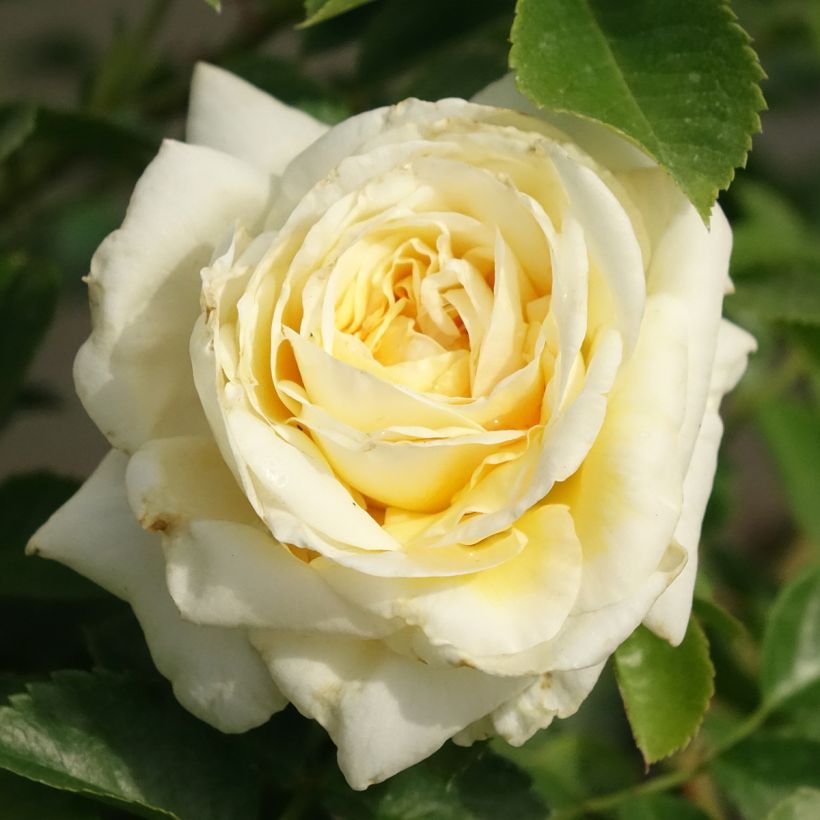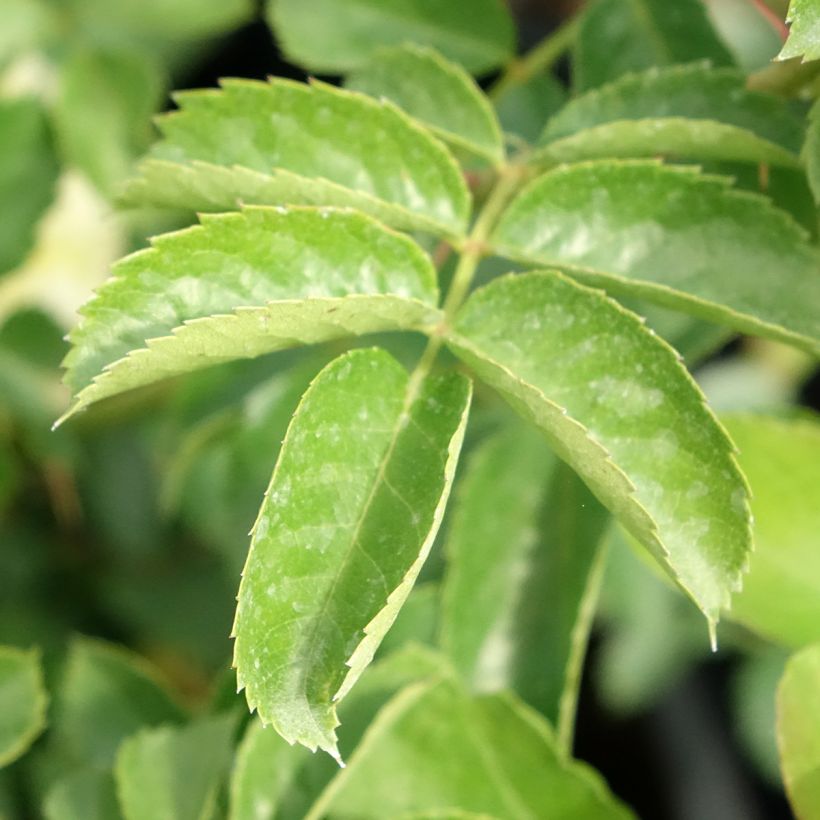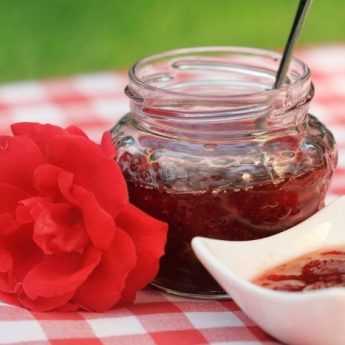

Rosa 'Meibalneo' NADIA MEILLANDECOR® - Rosier Nadia Meillandécor, Rosier Nadia Meidiland


Rosa 'Meibalneo' NADIA MEILLANDECOR® - Rosier Nadia Meillandécor, Rosier Nadia Meidiland


Rosa 'Meibalneo' NADIA MEILLANDECOR® - Rosier Nadia Meillandécor, Rosier Nadia Meidiland
Rosa 'Meibalneo' NADIA MEILLANDECOR® - Rosier Nadia Meillandécor, Rosier Nadia Meidiland
Rosa 'Meibalneo' NADIA MEILLANDECOR®
Rosier Nadia Meillandécor, Rosier Nadia Meidiland
Home or relay delivery (depending on size and destination)
Schedule delivery date,
and select date in basket
This plant carries a 24 months recovery warranty
More information
We guarantee the quality of our plants for a full growing cycle, and will replace at our expense any plant that fails to recover under normal climatic and planting conditions.

Does this plant fit my garden?
Set up your Plantfit profile →
Description
The Nadia Meillandecor® Shrub Rose is a ground cover variety specially selected for its abundant flowering and spreading habit. With its wide and creeping silhouette, it quickly covers large areas even on challenging terrain such as slopes, poor soil, and dry embankments. Its large, lightly fragrant, bright yellow double flowers with apricot highlights appear in dense clusters, forming silky pompons that illuminate the bush from May until the first frosts. With its spectacular effect and minimal maintenance, it is ideal for gardeners looking for a hardy, decorative, and easy-care rose.
Belonging to the Rosaceae family, the Nadia Meillandecor® Shrub Rose 'Meibalneo', also known as the Nadia Meidiland Rose, is a hybrid variety designed to combine abundant flowering with excellent ground cover. This wide, spreading bush reaches 50 to 60 cm in height and around 100 cm in spread, making it a perfect choice for swiftly covering slopes, large beds, and open spaces. Its flexible, slightly arching branches extend over a metre, developing dense foliage that naturally suppresses weeds and stabilises sloping ground. The double flowers of approximately 10 cm in diameter consist of 95 petals arranged in generous pompons, giving them a silky, airy texture. Their bright yellow colour warmed by subtle apricot highlights remains vibrant throughout the season. These roses appear in successive waves, gathered in dense clusters that almost entirely cover the foliage from May until the first frosts. The deciduous, dark green, glossy foliage is not only decorative but also highly disease-resistant, particularly against powdery mildew and black spot. This hardiness enables the rose to remain in perfect health without requiring any chemical treatments, thus reducing maintenance. Thanks to its flexible, creeping habit, it is particularly suited to difficult terrain where it can provide fast and aesthetic coverage. Its deep roots help stabilise the ground, making it an excellent choice for slopes or dry embankments.
The Nadia Meillandecor Shrub Rose can adapt to a wide range of soil types provided that they are well-drained. It thrives in sunny positions, essential for promoting abundant and intense flowering. Its dense ground-covering effect makes it an excellent choice for large spaces. Mulching at the base will further enhance its drought resistance and prolong its flowering. Thanks to its bright yellow colour with apricot highlights, this rose will pair particularly well with low-growing bushes with grey-green foliage such as lavenders, artemisias, or perovskias which enhance its brilliance. In a mixed border, it will blend beautifully with blue or violet hardy geraniums (‘Rozanne’, ‘Orion’), creating a striking contrast. In a natural garden, it will elegantly complement light ornamental grasses such as Stipa tenuifolia or Miscanthus sinensis, enhancing its airy, rural effect. if grown on slopes, it can be combined with other ground-cover roses to create waves of colour. In a low landscape hedge, it will form a season-long floral curtain, perfect for bordering a path or structuring a sloping garden. It can also be grown as a standalone feature on a large lawn where its flexible, spreading habit will highlight the delicacy of its flowering. Thanks to its light fragrance, it will also find favour near living areas, where its luminous and abundant effect will create a warm and welcoming atmosphere.
Report an error about the product description
Rosa 'Meibalneo' NADIA MEILLANDECOR® - Rosier Nadia Meillandécor, Rosier Nadia Meidiland in pictures




Plant habit
Flowering
Foliage
Botanical data
Rosa
'Meibalneo' NADIA MEILLANDECOR®
Rosaceae
Rosier Nadia Meillandécor, Rosier Nadia Meidiland
Rosa 'Meibalneo' NADIA MEIDILAND
Cultivar or hybrid
Planting and care
Nadia Meillandecor roses prefer a sunny position (at least 4 hours of sunlight per day) but sheltered from the scorching midday sun and strong winds. They thrive in loose, well-drained, humus-rich soil. They prefer slightly acidic soil but will adapt to any garden as long as the ground is well-prepared and sufficiently fertile. To plant your rose in a pot, work the soil to a depth of 25 cm, breaking it up finely and adding a base amendment such as dried blood or dehydrated horn meal at the bottom of the planting hole. Place your plant, freed from its pot, covering the top of the root ball with 3 cm of soil, backfill, and water thoroughly to eliminate any air pockets. During dry weather, water regularly for a few weeks to encourage root establishment. Also, remember to feed your rose with a special rose fertiliser to promote flowering.
Roses often develop spots or look unsightly by late summer, but this does not affect their growth. These spots are not harmful to the plant—it's a natural phenomenon. Follow all our advice to address this issue and read our article: Help! My Roses Have Spots
Planting period
Intended location
Care
Planting & care advice
This item has not been reviewed yet - be the first to leave a review about it.
Haven't found what you were looking for?
Hardiness is the lowest winter temperature a plant can endure without suffering serious damage or even dying. However, hardiness is affected by location (a sheltered area, such as a patio), protection (winter cover) and soil type (hardiness is improved by well-drained soil).

Photo Sharing Terms & Conditions
In order to encourage gardeners to interact and share their experiences, Promesse de fleurs offers various media enabling content to be uploaded onto its Site - in particular via the ‘Photo sharing’ module.
The User agrees to refrain from:
- Posting any content that is illegal, prejudicial, insulting, racist, inciteful to hatred, revisionist, contrary to public decency, that infringes on privacy or on the privacy rights of third parties, in particular the publicity rights of persons and goods, intellectual property rights, or the right to privacy.
- Submitting content on behalf of a third party;
- Impersonate the identity of a third party and/or publish any personal information about a third party;
In general, the User undertakes to refrain from any unethical behaviour.
All Content (in particular text, comments, files, images, photos, videos, creative works, etc.), which may be subject to property or intellectual property rights, image or other private rights, shall remain the property of the User, subject to the limited rights granted by the terms of the licence granted by Promesse de fleurs as stated below. Users are at liberty to publish or not to publish such Content on the Site, notably via the ‘Photo Sharing’ facility, and accept that this Content shall be made public and freely accessible, notably on the Internet.
Users further acknowledge, undertake to have ,and guarantee that they hold all necessary rights and permissions to publish such material on the Site, in particular with regard to the legislation in force pertaining to any privacy, property, intellectual property, image, or contractual rights, or rights of any other nature. By publishing such Content on the Site, Users acknowledge accepting full liability as publishers of the Content within the meaning of the law, and grant Promesse de fleurs, free of charge, an inclusive, worldwide licence for the said Content for the entire duration of its publication, including all reproduction, representation, up/downloading, displaying, performing, transmission, and storage rights.
Users also grant permission for their name to be linked to the Content and accept that this link may not always be made available.
By engaging in posting material, Users consent to their Content becoming automatically accessible on the Internet, in particular on other sites and/or blogs and/or web pages of the Promesse de fleurs site, including in particular social pages and the Promesse de fleurs catalogue.
Users may secure the removal of entrusted content free of charge by issuing a simple request via our contact form.
The flowering period indicated on our website applies to countries and regions located in USDA zone 8 (France, the United Kingdom, Ireland, the Netherlands, etc.)
It will vary according to where you live:
- In zones 9 to 10 (Italy, Spain, Greece, etc.), flowering will occur about 2 to 4 weeks earlier.
- In zones 6 to 7 (Germany, Poland, Slovenia, and lower mountainous regions), flowering will be delayed by 2 to 3 weeks.
- In zone 5 (Central Europe, Scandinavia), blooming will be delayed by 3 to 5 weeks.
In temperate climates, pruning of spring-flowering shrubs (forsythia, spireas, etc.) should be done just after flowering.
Pruning of summer-flowering shrubs (Indian Lilac, Perovskia, etc.) can be done in winter or spring.
In cold regions as well as with frost-sensitive plants, avoid pruning too early when severe frosts may still occur.
The planting period indicated on our website applies to countries and regions located in USDA zone 8 (France, United Kingdom, Ireland, Netherlands).
It will vary according to where you live:
- In Mediterranean zones (Marseille, Madrid, Milan, etc.), autumn and winter are the best planting periods.
- In continental zones (Strasbourg, Munich, Vienna, etc.), delay planting by 2 to 3 weeks in spring and bring it forward by 2 to 4 weeks in autumn.
- In mountainous regions (the Alps, Pyrenees, Carpathians, etc.), it is best to plant in late spring (May-June) or late summer (August-September).
The harvesting period indicated on our website applies to countries and regions in USDA zone 8 (France, England, Ireland, the Netherlands).
In colder areas (Scandinavia, Poland, Austria...) fruit and vegetable harvests are likely to be delayed by 3-4 weeks.
In warmer areas (Italy, Spain, Greece, etc.), harvesting will probably take place earlier, depending on weather conditions.
The sowing periods indicated on our website apply to countries and regions within USDA Zone 8 (France, UK, Ireland, Netherlands).
In colder areas (Scandinavia, Poland, Austria...), delay any outdoor sowing by 3-4 weeks, or sow under glass.
In warmer climes (Italy, Spain, Greece, etc.), bring outdoor sowing forward by a few weeks.



































